- Return to main Featured Ranch Archives index
Lykes Ranch
November 1999
Lykes Agriculture is one of the largest landholders in Florida, with approximately 367,000 acres. It is a wide spectrum agricultural operation utilizing land for sustainable economic production of cow-calf, citrus groves, pine forests, wildlife management, and sugarcane. Lykes Ranch, in Glades and Highlands counties, carries the fifth largest cow-calf herd in the United States and is second only to Deseret Cattle Ranch and Citrus in Florida.
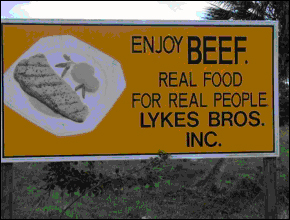
The roots of Lykes Bros. Inc., of which Lykes Agriculture is one of the subsidiaries, began in the late 1800s when Dr. Howell Tyson Lykes gave up his medical practice to raise cattle and citrus at the family homestead in rural Hernando county. By the turn of the century, Dr. Lykes had moved his family and business to Tampa, and he was shipping cattle to Cuba aboard a three-masted wooden schooner christened the "Dr. Lykes". One by one, each of Dr. Lykes' seven sons joined the family business. Working together, they expanded and diversified, incorporating their business as Lykes Bros. Inc. in 1910. Descendants of Dr. Lykes have retained ownership of Lykes Bros., Inc. and continue to build on the solid foundation laid by Dr. Lykes and his seven sons. Lykes Agriculture is headquartered in Lake Placid and consists of the Ranch, Citrus (41, 880 acres), Forestry and Sugarcane Divisions. There is also Lykes Agr Sales that markets allied products such as fertilizer and chemicals.
Pat Hogue (Highlands County Extension Director) and I spent time with Mike Milicevic (General Manager of Cattle Operations) on October 12 to tour Lykes ranch land. The ranch property is bounded on the north by the Kissimmee River and Lake Istokpoga. It runs south to the west shore of Lake Okeechobee just north of Moore Haven and west to the Glades County line. The ranch wraps around the southern end of the Florida Ridge and lies in a number of physiographic regions including the Okeechobee plain, the Caloosahatchee Valley, the Caloosahatchee Incline, and the DeSoto Plain. The topography is relatively flat with elevations ranging from 15 to 75 feet above sea level and slopes averaging 1 to 3 feet per mile. The combination of low permeability and relatively flat topography results in a high percentage of wetland areas (approximately 23% of ranch is wetland).
The cow-calf operation maintains two basic breeding herds:
- Beefmaster breeding group
- Brangus breeding group
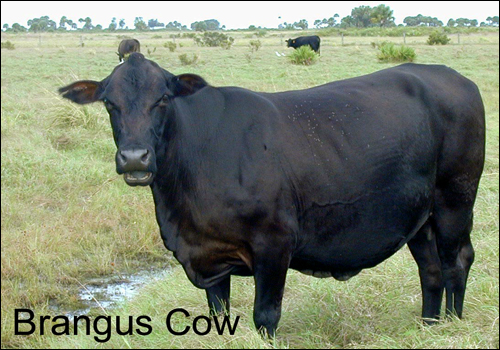
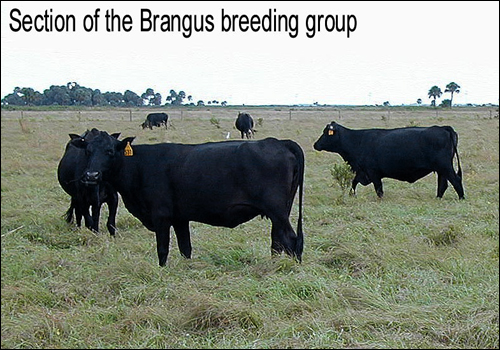
In addition, the Ranch engages in terminal crosses involving the use of Charolais and Limosins. The primary emphasis of the operation at this time is on beef quality improvement program where calves receive vaccinations, de-worming treatments, and good nutrition all year. Mike indicated that production of top quality calves is the key to securing good markets.
Lykes Ranch pasture improvement program is based on mixture of Tifton 9 bahiagrass and carpon desmodium. Approximately 4,000 acres of the mixture were established in 1998 alone to replace irrigated pastures developed into sugarcane plantations. Other bahiagrass pastures have Savanna Stylo. On the irrigated wetlands, Louisiana white clover and American jointvetch are the legumes of choice. Among the warm season grasses used on the Ranch are Callide rhodesgrass (500 acres), Floralta limpograss and some old experimental type of stargrass. For those producers with rhodesgrass persistence problems, Mike is the guy to talk to because he has maintained some stands under heavy grazing for 9 years!
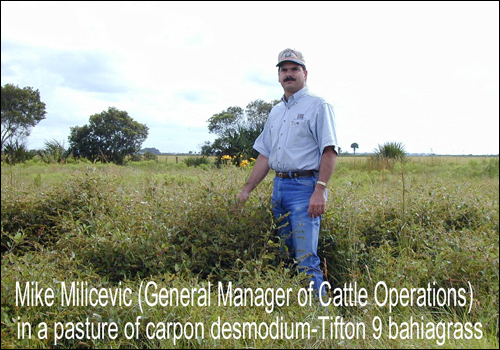
Winter forage is also diverse in type. Rhodesgrass is fertilized in the fall and Floralta is fertilized between January and February to provide winter forage supplement. Nearly 4,000 acres of irrigated ryegrass are grown annually, using a combination of clean tillage and sod-seeding. Because of prevailing wet soil conditions and irrigation, both ryegrass cropping methods are equally successful. Ryegrass forage is utilized exclusively by growing yearling heifers, 2-year old heifers and first-calf cows. These groups also receive cotton seed pellets and molasses containing all natural protein as supplement. The older cow herds are supplemented with urea-molasses mixture throughout the winter.
Pasture managers, Stan Speed (north pastures) and Joel Graves (south pastures) are busy year-round. They conduct soil sampling in late summer to early fall for analyses in order to obtain results before fall and spring fertilization. The soil pH is maintained above 5.2 throughout the Ranch via constant monitoring and dolomitic liming. General pasture fertilization consists of 300 lb/A ammonium sulfate (63 lb N/A) from January through March. The rhodesgrass success story might be that those pastures receive some K but no P, yearly. New pasture establishments are given a starter P from 300 lb/A of 20-05-10.
Mike Milicevic is a Gator Agronomy B.S. graduate and a Texas A&M MS Feedlot Operations/Business Specialist. Through Mike's leadership, Lykes ranch has cooperated with a number of research, demonstration and education programs that promote environmental stewardship. For example, the South Florida Beef and Forage fertilizer study on types and rates of fertilizer used on pastures which led to IFAS new fertilizer recommendations and on-going work with NRCS on native range grazing systems.
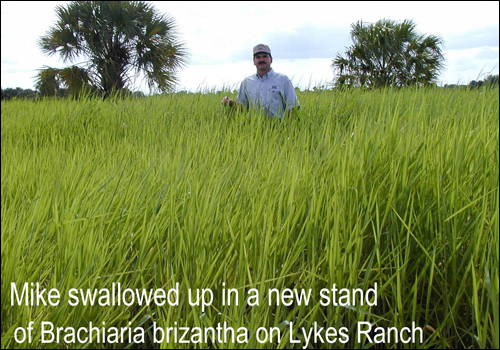
Mike maintains a limited experimental grass and legume introduction program with a private company on the ranch and had impressive new stands of Brachiaria brizantha, B. dictyoneura and B. subquadripara on a 30 acre section during our visit. Mike plays a leading role in natural resource management and environmental stewardship on Lykes Ranch which won the 1999 Florida Agricultural and Consumer's Services Commissioner's Ag-Environmental Leadership Award. Mike has been instrumental in the development of BMPs for Florida Cattlemen. Mike, we appreciate your time with us and keep up your good work.

